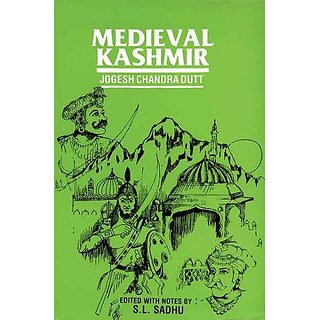
Medieval Kashmir
Quick Overview
The inherent genius of Sultan Zain-ul-Abdin (1420-70 A.D.) prompted him to commission Jonaraja Pandit to record in Sanskrit verse the history of Kashmir from where Kalhana had left in 1151 A.D. It was, perhaps, the most important decision of the Sultan. J.G. Dutt himself made history in 1879 A.D. when he presented to the world the earliest English translation of the first part of the celebrated work of Kalhana, viz., the Rajatarangini. It was entitled Kings of Kashmira and the second part, appearing in 1887, completed the English version of Kalhana’s masterpiece. Dutt went ahead with his labour of love and published in 1898 the third volume comprising the works of Jonaraja and his successors. Shortly after appeared the English rendering of Sir Auriel Stein. The acclaim accorded to the latter notwithstanding, Dutt retains the pioneer’s rank. Medieval Kashmir projects the transition of the kingdom from the days of the independent Hindu kings who were utterly demoralised by Zulshu’s invasion (1320 A.D.) and the prowess of Rinchana (1320-23). The emergence of the strong man Shahmir (1339-42), a Muslim emigre from the outer hills, who founded the independent Sultanate, left no role for the Hindu feudal chiefs, many of whom had been already neutralised in a chain-link of matrimonial alliances. The effete Hindu society vanished in a few decades, leaving only a grin behind. The central authority in the land collapsed after 1486 A.D., leading to chaos, but the cut-throat rivalry among martial clans remained unabated. The Kashgaris invaded the Valley in 1531 A.D., and again a few years later, but every outstanding clan leader continued to itch for armed assistance from beyond the Valley to show his rivals down. The last invasion in the mid-forties was the prelude to the ultimate annexation of Kashmir by the Mughals in 1587 A.D.
